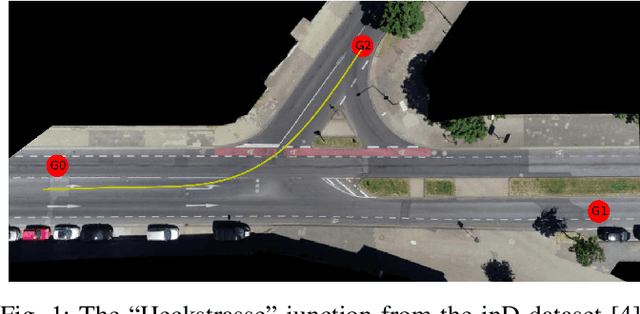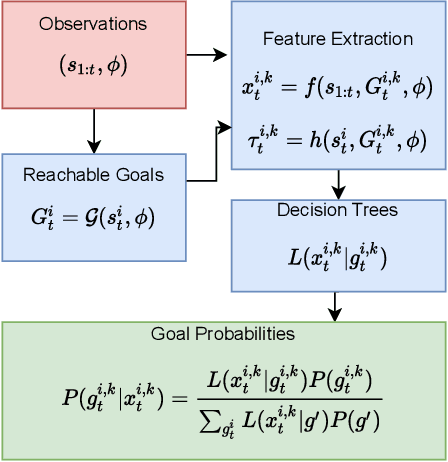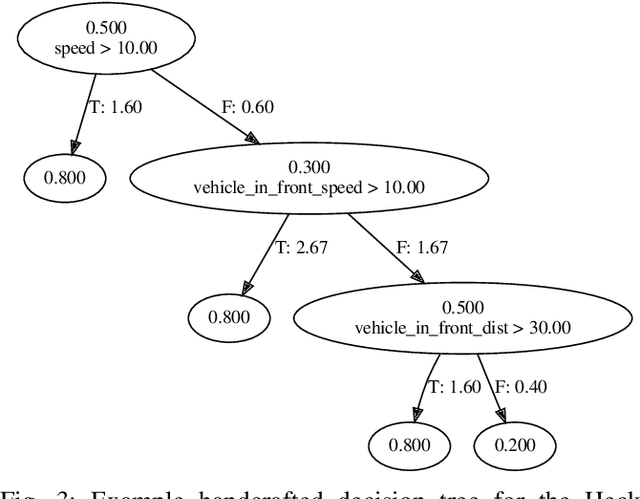GRIT: Verifiable Goal Recognition for Autonomous Driving using Decision Trees
Paper and Code
Mar 10, 2021



It is useful for autonomous vehicles to have the ability to infer the goals of other vehicles (goal recognition), in order to safely interact with other vehicles and predict their future trajectories. Goal recognition methods must be fast to run in real time and make accurate inferences. As autonomous driving is safety-critical, it is important to have methods which are human interpretable and for which safety can be formally verified. Existing goal recognition methods for autonomous vehicles fail to satisfy all four objectives of being fast, accurate, interpretable and verifiable. We propose Goal Recognition with Interpretable Trees (GRIT), a goal recognition system for autonomous vehicles which achieves these objectives. GRIT makes use of decision trees trained on vehicle trajectory data. Evaluation on two vehicle trajectory datasets demonstrates the inference speed and accuracy of GRIT compared to an ablation and two deep learning baselines. We show that the learned trees are human interpretable and demonstrate how properties of GRIT can be formally verified using an SMT solver.
 Add to Chrome
Add to Chrome Add to Firefox
Add to Firefox Add to Edge
Add to Edge